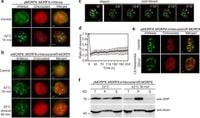Researchers have pinpointed a novel mechanism through which heat stress adversely affects photosynthesis in plants, revealing that the multiple organellar RNA-editing factor 8 (MORF8) responds to high temperatures by forming solid-like structures in chloroplasts. This study proposes that MORF8 acts as a potential thermosensor that inhibits vital RNA editing processes necessary for efficient photosynthesis.
Heat stress has long been acknowledged as a major contributor to reduced crop yields, with its detrimental impact on photosynthesis efficiency notable. However, the underlying molecular mechanisms remain elusive. The recent findings from a collaborative research effort undertaken by scientists at various institutions shed light on how MORF8, an essential player in RNA editing within chloroplasts, alters its behavior in response to heat. When subjected to temperatures as high as 42 °C, MORF8 does not just exhibit changes in expression—rather, it undergoes a phase transition, forming condensates that hinder its function.
This functional transition of MORF8 is critically dependent on an intrinsically disordered region (IDR) within its structure, which mediates its condensation behavior in response to heat. Experimental evidence shows that when plants are subjected to elevated temperatures, MORF8 transitions from a diffuse state throughout the chloroplast to concentrated domains that are quite resistant to dissolution, even after the heat stress is mitigated.
“MORF8 condensation inhibits chloroplast RNA editing, which leads to impaired NADH dehydrogenase-like (NDH) complex activity and, subsequently, decreased photosynthesis efficiency,” the authors of the article explain. In simpler terms, the solid-like properties of MORF8’s condensates effectively block the editing of critical RNA molecules necessary for the formation and function of the NDH complex, an essential component of the photosynthetic machinery in plants.
A fascinating aspect of this mechanism is the dual functionality of MORF8, as it is also localized in mitochondria, suggesting it may play a role beyond just chloroplast function. This study opens doors for further exploration into how other organellar RNA editing proteins may respond to environmental stresses, potentially unveiling broader implications for plant resilience in an era of climate change.
To confirm their hypothesis, the researchers employed a series of genetic and biochemical approaches. They found that not only did the mutations that led to the deletion of the IDR region eliminate the condensation of MORF8 entirely, but overexpressing MORF8 resulted in evident growth defects and reduced RNA editing efficiency in plants, underscoring the necessity of fine-tuning MORF8 levels for optimal plant health.
This in-depth analysis also revealed the intricate relationships between MORF8 and other editing factors within the chloroplast. The study utilized proteomic analyses, identifying 241 and 242 proteins associated with MORF8 condensates under heat stress and overexpression conditions, respectively. Of particular interest, 110 of these proteins were found to overlap, suggesting a conserved response mechanism activated under thermal duress.
The implications of this research extend beyond basic biology, as understanding how heat affects photosynthesis is critical for enhancing agricultural resilience. As global temperatures continue to rise, this insight into RNA editing in plant chloroplasts might offer avenues for developing crops that are more heat-tolerant, thereby safeguarding food security in the face of climate change.
In summary, the condensation of MORF8 provides a newly identified avenue through which heat stress can hinder photosynthesis, revealing a complex interaction of cellular components that could be exploited for more efficient agricultural practices in an era starkly defined by climate instability.

